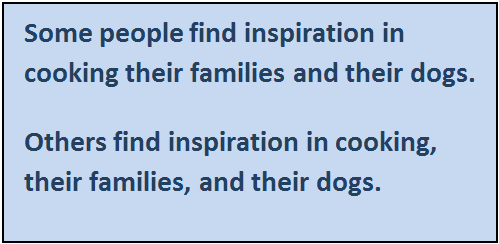
Punctuation is to writing what vocal delivery is to speech. Every full stop, comma, apostrophe, colon, parenthesis, quotation mark and hyphen serves its purpose in guiding the reader through the text. It’s useful to know what each mark can and cannot do, as well as the message it delivers to your reader.
Here are some simple rules and examples.
Use the comma (,)
To separate items in a sentence.
We bought milk, bread, meat and cheese at the store.
Before and, but, or, nor, for, so and yet when they join independent clauses.
I like to eat hamburgers, but I don’t like the fries.
After introductory elements.
Well, I think I’ll go to bed. Before you leave, turn off the lights.
To set off an expression that interrupts a sentence.
All fishermen on the lake, I’m certain, wear life jackets.
Use the colon (:)
To introduce a list when the introductory text is a complete sentence.
Please bring the following items: a jacket, a towel, a swimsuit and goggles.
Incorrect - Please bring: a jacket, a towel, a swimsuit and goggles.
Before a long, formal statement or quotation:
My teacher’s comment on my test was very complimentary: “This essay coherently analyzes the impact pollution is having on our environment.”
Use the semi-colon (;)
Between independent clauses not joined by and, but, nor, for, yet and so.
Friends was my favorite TV show during the 90s; in fact, it is my favorite TV show of all time.
Between independent clauses joined by the words for example, besides, nevertheless, however, etc.
I think they are right; however, it’s difficult to know where the truth lies.
Between items in a series if the items contain commas.
I have lived in New York, New York; Chicago, Illinois; and Los Angeles, California.
Use the apostrophe (‘)
To form the possessive case of a singular noun.
Matthew’s book. Cindy’s car.
To form the possessive of a plural noun.
The girls’ soccer team.
To show where letters have been omitted in a contraction.
it’s = it is. Haven’t = have not.
Use parentheses ( )
To de-emphasize a given phrase in a sentence.
Jack and Tom (the boy next door) are best friends.
Use the hyphen (-)
To divide a word at the end of a line.
If you are not sure where to hyphen-
ate a word, ask your teacher.
A compound word where it precedes the word it modifies.
fast-moving, long-distance, short-comings.
Use the dash (--)
To indicate an abrupt break in thought.
Our daughter – Natalie – has a passion for badminton.
To lead into an after-thought.
Sam speaking to his imaginary friend in a private language – one that I don’t understand.
Use double quotation marks (“)
To surround words spoken or written by someone else.
The ghost said, “I’m not as scary as I look.”
To surround words used as terms.
What do you think “freedom” means to US citizens?
To surround titles of chapters or articles.
Did you read “Wildfires Rage in California” in today's newspaper?
Use Single quotation marks (‘)
To surround a quotation that occurs inside another quotation.
The teacher said, “Whenever I explain punctuation, someone asks, ‘What is the purpose of single quotes? ‘”

